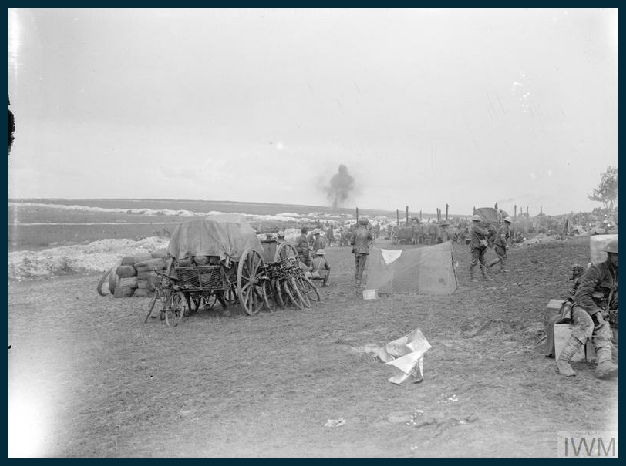Copyright © All rights reserved.



John Knott
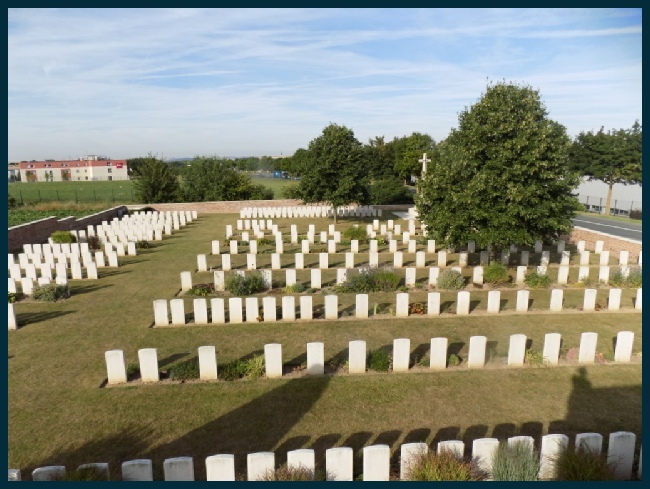
By the end of June the 58th Division found themselves on the Somme. On 1st of July began the Battle of Albert, the first two weeks of Anglo-
The British and French Army attacks to the south of the Albert to Bapaume road were very successful, inflicting a considerable defeat to the German Second Army. However, north of the Albert-
On 1st July, 19th (Western) Division were the Corps Reserve of III Corps, as they attacked Ovillers and La Boisselle, either side of the Albert-
Following this attack, the remainder of 19th Division moved forwards to relieve 34th Division, who had suffered very heavy casualties in their failed attack on La Boisselle. On 2nd July, 19th Division renewed the attack on La Boisselle, capturing the majority of the village on 3rd July. Although part of their gains were lost to a strong German counter-
Presumably it was during this action or its immediate aftermath that John was killed. He died on 5th July 1916 and was buried where he fell. After the War the Graves Registration Unit located his burial noting a broken cross marking it, and he was buried at Bapaume Post Military Cemetery at Albert.
John Knott is commemorated on the Malton town War Memorial as well as on that of St Michael’s Church.
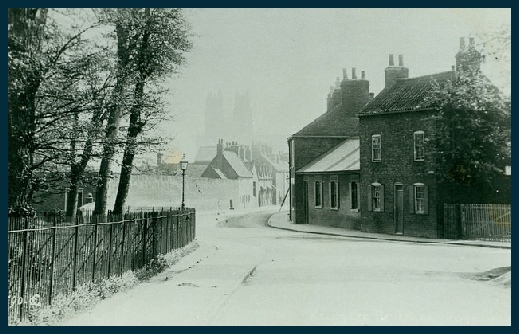
John James Knott was the only son and the eldest of the four children of John James and Jane Knott. When and where they married is not clear but it is possible that they are the John Knott and Jane Taylor who married in Ashton under Lyme in 1881.
While they lived for most of their married life in Beverley, John was born in Lofthouse, Cleveland during the third quarter of 1885.
By 1891 John and Jane were living in Kitchen Lane, Beverley a few small houses on the extreme edge of the town close to the tannery and the bleaching yard, with their three children. John was scraping a living as a bricklayer’s labourer.
1891 Census -
John Knott, Head, Married, Male, 40, Bricklayers Labourer, Beverley, Yorkshire
Jane Knott, Wife, Married, Female, 36, -
John J. Knott, Son, -
Hannah Eliz. Knott, Daughter, -
Ellen Knott, Daughter, -
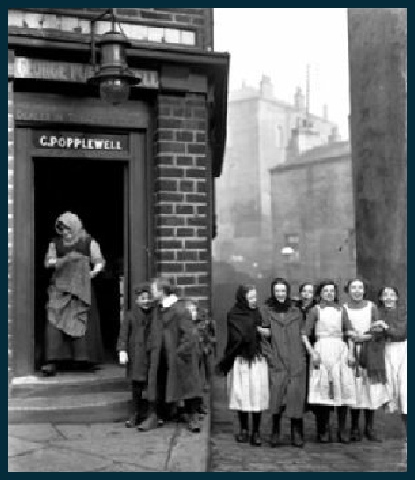
By 1901 Jane had died, probably in the third quarter of 1900 in Bradford where the family had moved.
John senior was still working as a bricklayer’s labourer but John junior and his sister Hannah were working in a wool mill producing high quality worsted yarn.
John was working as a wool comb minder. The job involved tending the combing machine for combing wool to remove foreign matter and to separate the short fibres from the long fibres required for worsted yarn. He would place the balls of sliver on the machine, passing the ends of sliver from the balls through guides and placing the ends on the comb mechanism. After starting the machine and threading the sliver, the combed sliver would come out of the drawing rollers, through a funnel into a can at delivery end. John would have to join broken ends and place new balls on the machine when necessary. And replace full cans with empty ones at the delivery end. He would also remove noil (short fibres of wool separated from longer fibres by combing) from underneath the machine and be responsible for oiling and cleaning the machine.
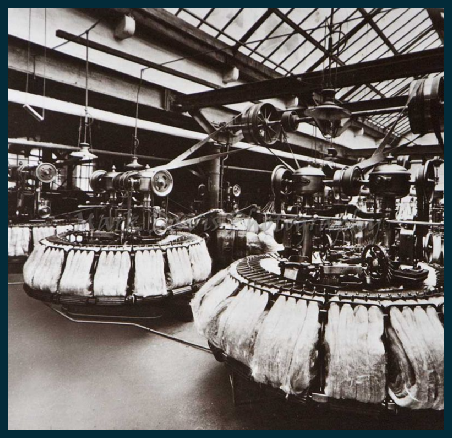
1901 Census -
John Knott, Head, Widower, Male, 51, Bricklayer Labourer, Beverley, Yorkshire,
John James Knott, Son, Single, Male, 15, Wool Comb Minder, Cleveland, Yorkshire
Hannah E. Knott, Daughter, Single, Female, 13, Worsted Spinner, Beverley, Yorkshire
Nelly Knott, Daughter, Single, Female, 11, -
Lizzie Knott, Daughter, Single, Female, 9, -
Mary Pickering, Servant, Married, Female, 62, House Keeper, Beverley, Yorkshire
On 4th June 1902 John, was clearly back from West Yorkshire as he signed up with the 4th Battalion of the Yorkshire Regiment as part of the Militia the forerunner of the territorials. He was then aged 18 years and 6 months. He gives his place of birth as Cleveland and it may well be that he was living around there at the time as the 4th were then based between Teeside and Northallerton.
At this time the uniform was a bright not to say gaudy outfit with a red jacket, blue trousers, white collar, cuffs and webbing. The bright uniform colours and white webbing had for a long time been seen as a liability in battle and it was changed to a more workaday green before 1908.
John would presumably have participated in the weeks training in June 1903 when the battalion went for “their annual week's training under canvas at Scarborough. The exposed position of their camp on the race course and the inclement weather gave them an experience of the hardships rather than the pleasures of military life.”
In April 1908 an Act of Parliament, created by R.B.S. Haldane, the Secretary for War, re-
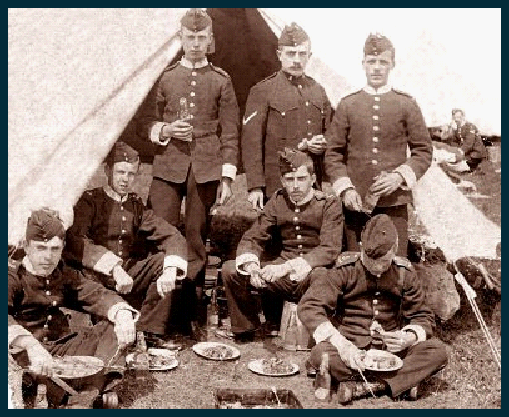
John Senior died in Beverley in 1907 and by 1911 the family had broken up and John was living and working as a labourer in York.
1911 Census -
John Welch, Head, Married, Male, Publican, 29, Nittey Hants
Charlotte Helen, Wife, Married, Female, Assists In Business, 28, Brighton Sussex
Emily Stevenson, Servant, Single, Female, General Servant, 29, Malton Yorks
John Knott, Boarder, Single, Male, Labourer, 26, Cleveland Yorks
Fred Warwick Boarder, Single, Male, Labourer, 29, Malton Yorks
Frank Clifford Boarder, Single, Male, Army Pensioner For, 28, Terrington Little Yorks
It may be that it was through his fellow lodger Fred Warwick that he met Annie Ellis as Fred was brought up only about four houses from Annie’s home in Steven’s Yard.
Be that as it may, by 1915 Annie and John were both resident in Newbiggin when they married in St Michael’s church, Malton on 21st February 1915. On the certificate John gave his occupation as signal fitter, a job which involved the installation and maintenance of railway signals and associated mechanical equipment.
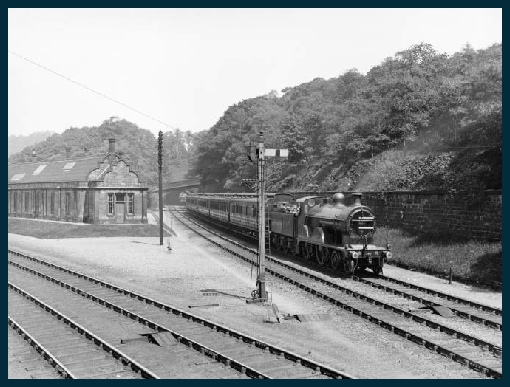
John did not have long to enjoy the married life as the 4th Battalion was sent to France on 17th April. It is entirely likely that he was on leave when he got married! It would also seem likely that Annie was pregnant before they married because their only child Elsie was born at Malton in September 1915.
The 4th Battalion arrived in France on the 18th April 1915 and expected the usual period of training and familiarisation with Trench warfare. Instead they found themselves in the path of a German offensive which was to become known as the Second Battle of Ypres and they were thrown straight into battle, within a week of sailing from England.
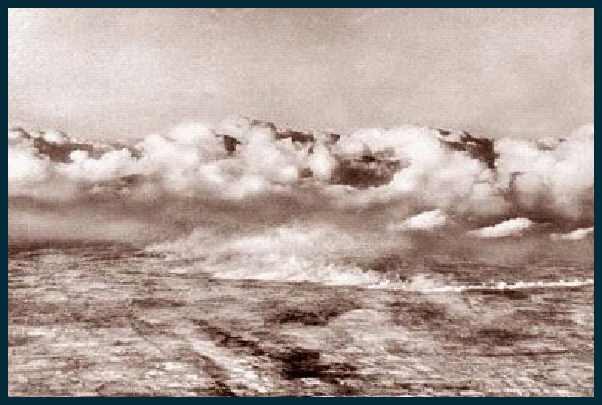
The Germans began their onslaught with a new sinister weapon, releasing 6,000 canisters of chlorine gas along the North East edge of the Ypres Salient. Utterly unprepared for what was to come, the British and French gazed for a short while spellbound at the strange phenomenon they saw coming slowly toward them. Like some liquid the heavy-
For a few seconds nothing happened; the sweet-
There was nothing on the British left -
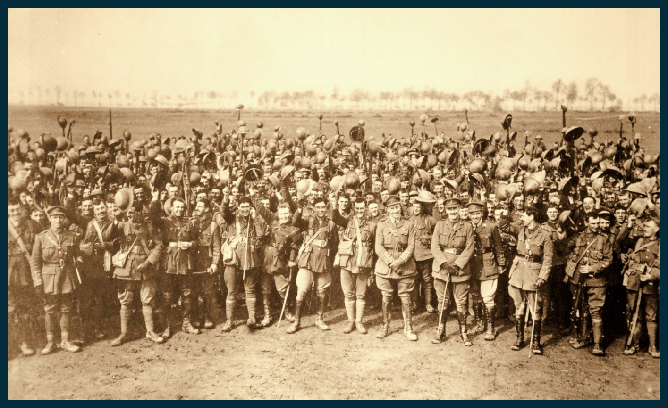
It was now that the utterly inexperienced 4th Yorkshires arrived after a night march past "gaping shell holes, broken-
As soon as it was light the German Artillery opened up. All the morning the Battalion were being shelled at intervals and at
mid-
Both Battalions lost heavily while crossing the open ground, but the Germans were driven back into St Julien. It was here they got the name of the "Yorkshire Gurkhas".
During May during the day the Germans kept up a constant hail of shells. Then once again they released chlorine gas. It was now less of a surprise and the troops had improvised respirators "made of cotton-
Throughout May and June they continued to suffer the horrors of trench warfare in the Ypres area, but towards the end of June they were moved to the rather quieter Le Neuve sector.
In August they were moved to Armentieres until December. Here they alternated between the front line and the reserve trenches with a fair amount of time spent training in skills such as bomb-
One of the causes of sickness was Trench Fever. Soldiers infected would be struck by a sudden fever, loss of energy, dizziness, headache, skin rash and severe muscle and bone pain could occur. The virus which caused these symptoms was passed from man to man by the lice, with which most men became infested. In the confined conditions of the Trenches and billets with only primitive sanitation, lack of
regular bathing and changes of clothing etc the lice thrived. Their eggs usually survived all attempts at cleaning in the seams of clothing and hatched out again when they felt the warmth of the human body. A Medical Officer of the 50th Division reported that reinforcement personnel on arrival already had lice and scabies, another condition caused by parasites.
In December they returned to the Ypres Salient, once more coming up against gas attacks and finding themselves in appallingly dilapidated and flooded trenches in Armagh Wood. For most of December and January they found themselves under heavy shell bombardment.
In February things quieted down a bit and men were sent on courses on such things as physical drill, smoke helmet drill, dummy bombs and cartridges, Platoon drill etc. On the 5th February the War diary dryly observes “The 25 men per Company who have been training on previous days at throwing dummy bombs, plus the Battalion Bombers, proceed to throw live bombs. One of these on exploding throws a "dud" out of the pit which explodes and slightly wounds 3 men. 8 Officers proceed to Bailleul for a lecture on "Artillery from the Infantry point of view."”
On 11th February the Battalion received training on the use of the Lewis Gun and it was probably shortly after this that John was transferred to the newly formed Machine Gun Corps.
John joined the 58th MG Company which was formed in Grantham. It moved to France and joined the 19th Division, 14 February 1916 as part of the 58th Brigade.
In 1914, all infantry battalions had been equipped with a machine gun section of two guns, which was increased to four in February 1915. The sections were equipped with Maxim guns, served by a subaltern and 12 men. The obsolescent Maxim had a maximum rate of fire of 500 rounds, so was the equivalent of around 40 well-
The experience of fighting in the early clashes and in the First Battle of Ypres had proved that the machine guns required special tactics and organisation. On 22 November 1914 the BEF established a Machine Gun School at Wisques in France, and on 2 September 1915 a definite proposal was made to the War Office for the formation of a single specialist Machine Gun Company per infantry brigade, by withdrawing the guns and gun teams from the battalions. They would be replaced at battalion level by the light Lewis machine guns and thus the firepower of each brigade would be substantially increased. The Machine Gun Corps was created by Royal Warrant on October 14 followed by an Army Order on 22 October 1915.
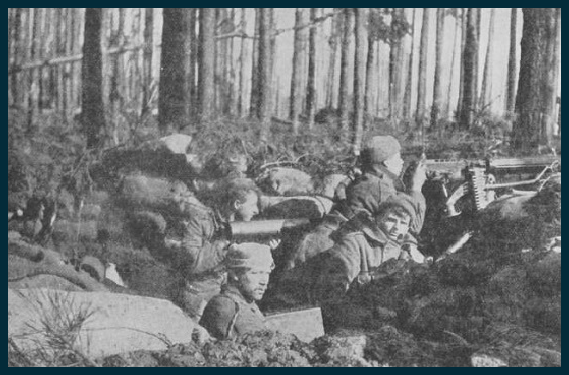
The companies formed in each brigade would transfer to the new Corps. The MGC would eventually consist of infantry Machine Gun Companies, cavalry Machine Gun Squadrons and Motor Machine Gun Batteries. The pace of reorganisation depended largely on the rate of supply of the Lewis guns but it was completed before the Battle of the Somme in 1916. A Base Depot for the Corps was established at Camiers.
Shortly after the formation of the MGC, the Maxim guns were replaced by the Vickers, which became a standard gun for the next five decades. The Vickers machine gun is fired from a tripod and is cooled by water held in a jacket around the barrel. The gun weighed 28.5 pounds, the water another 10 and the tripod weighed 20 pounds. Bullets were assembled into a canvas belt, which held 250 rounds and would last 30 seconds at the maximum rate of fire of 500 rounds per minute. Two men were required to carry the equipment and two the ammunition. A Vickers machine gun team also had two spare men.
